Spoilers abound. 
When Qlub Imweġġgħa’s trailer first started making the rounds on Facebook, many knocked it – for understandable reasons. I had refrained from participating in the mudslinging before watching the actual film. Having said that– now that the film is out in theatres in all its glory, it’s a different story. I like to believe that every self-respecting filmmaker wishes to learn more about the effect his film had on audiences, what worked and what could have been done better.. The film was, unfortunately, much as expected. The theatre was half full. Judging by the reactions of the audiences, most of them shared my sentiments.
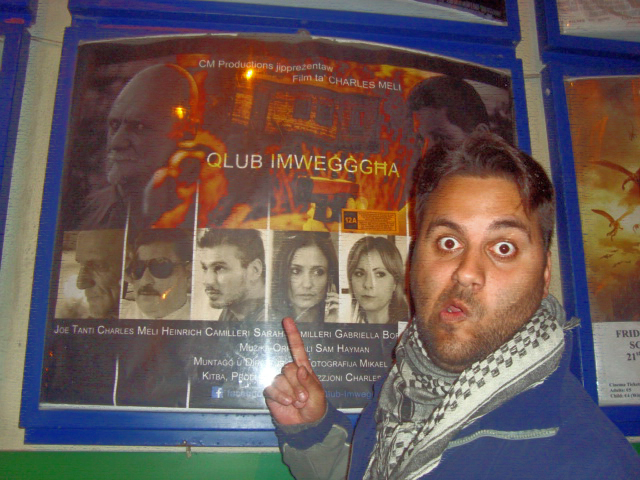
FINALLY – QLUB IMWEĠĠGĦA FIT-TOKIS!
I appreciate the effort given by everyone involved, and no, currently, I cannot say that I would have done a much better job than Mr.Meli myself with the material he had. Before going on, I should first acknowledging Meli’s bravery for taking on the mammoth task (if unrealistic) of writing, producing, directing the film as well as acting in the main role and even writing the lyrics to the credits song. I don’t think it would be really necessary to point out the endless series of disadvantages such a decision must have brought to the table.
But that is precisely why I will not attempt writing, producing, directing and acting in a romantic, dramatic, comedic thriller myself, as Mr. Meli did for this film. I know my limits. I somehow get the feeling that Mr.Meli and his team don’t know theirs.
Honestly, I’m sure I would find having my name associated with such a production embarrassing. It would be fair to say that the experience was generally amusing, if at times a little boring. The ‘boring’ part can only be attributed to the fact that the majority of the film’s timespan is eaten up by the characters explaining the plot and backstories to each other. And conversations on mobile phones. Lots of those.
As, Qlub Imweġġgħa is such a particular type of film, this will have to be a particular type of post… I’m going to try to present the information in separate sections according to the different topics. Brace yourselves.
FIRST SCENE
Let’s start with the very first scene. It involves a conversation between our hero, l-Ispettur…wait for it… John Smith(?!) (who looks a bit like a happily-married-for-some-time mustached Forrest Gump, or like a European Ali Bubaker with his shades on) – and his subordinate who is simply known and referred to as ‘Borg.’ So – in this initial conversation we get to know Smith’s (Meli, the writer and director himself) life story. He recounts it all to ever-bored Borg so pathetically and in so much detail, it makes you wonder how Borg still likes Smith. During this entire scene, each sentence Borg says ends with the word ‘Sir.’
This Borg/Smith relationship is never quite clear. It’s weird to say the least. I mean, are they pals or what? Why does Smith divulge personal life details to Borg, and then insists on referring to him solely by his surname? After this very one sided conversation, we get to see Borg and Smith do some police work. They are, after all police men and this is a (quoting Meli himself here) ‘romantic and dramatic thriller’. This first (Pre-Title Card) sequence is there to give the audience the impression that they’re about to watch another Richard Donner style buddy cop film, and that Smith and Borg are just like Murtaugh and Riggs.

Murtaugh and Riggs from the Lethal Weapon series
But alas. John Smith works alone and Borg is a useless and ineffective sidekick.For the majority of his screen time, he just types away nothings on a keyboard that doesn’t seem to be connected to anything, doing important police detective work for Sir John Smith.
This first ‘a day in the life of a lonely cop’ scene features a botched burglary of sorts where something (I’m not sure exactly what) was stolen from an old man’s house. The burglars leave the poor fellow so startled (even though he was apparently waiting for them with his night-lamp on) that he doesn’t make any sound, but simply raises his hands over his face.
With Smith hot on their trail, they run out of the premises, and a car chase ensues (much of which is heard rather than seen.) After what is supposed to feel like a heck of a long and grueling chase (it doesn’t), the bad guys seem to run out of gas and simply park. Smith parks beside them, runs out of the car – says some line about being nice to old people – “Ħalluhom l-anzjani!” and a close-up shows him handcuffing one of them – through the car window. With the baddie’s foot still on the gas pedal. Nice move sir.

‘Ħalluhom l-Anzjani!’
THE ACTING
I’ll start this section by saying that most of the actors involved deserve congratulations. They had a very difficult task of trying to make the unbelievable believable and give weight to such a superfluous story. In most cases (not all of them), I find no problem with the actors themselves – rather with the material they were working with and with the way they were directed. I sometimes got the feeling that in many instances, the actors ran through their lines and everyone rushed on to the next scene. One would also wonder how some of the actors were chosen.
One would also wonder how some of the actors were chosen. The first actor that comes to mind is the boy who played John Smith’s 10 to 13 year old son. Now it is definitely never easy to criticize a child’s acting performance. Still, the truth remains that some better direction or even multiple takes could have saved the boy from giving a wince-inducing performance in the final cut. An even flatter performance came from the actress who played Joe Tanti’s girlfriend.
THE FILM’S LOOK…
Is crappy. Most probably filmed using a DSLR, a few shots are over or under-exposed, but the whole film suffered from this dull, drab, yellowy wash. It was definitely not the cinematic look I’m sure Meli hoped for. More than once, the image was even out of focus. There also seemed to be a problem with the export. One sequence, which shows the bad guys toasting a celebration intercut with Clair’s miscarriage has jittering, which doesn’t feel like it was intended.
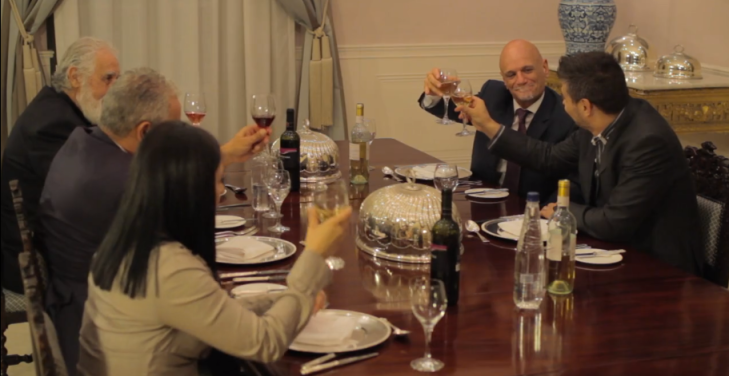
A toast!
THE STORY STRUCTURE & SCREENPLAY
In an interview which can be watched on Qlub Imweġġgħa’s Facebook page, Meli explains that the original script for the film was written about 7 years ago – and also that it was originally intended to be a tv series. He also says that it was then re-adapted for film. I beg to differ – it was television writing throughout. Meli (the writer) kept every story arc and twist imaginable to man in the script – shoves them into our mouths and forces us to swallow. The ‘story’ would have been much more effectively told in a miniseries – even six episodes would have sufficed. But no, guess Meli didn’t want to patronize us. They can take it, he must have thought. So he cooked all these bombastic ideas into a pudina and told us to eat it.
The film’s structure is inexistent. It is composed of countless flashbacks and flash-forwards and even more flashbacks and flash-forwards. The problem with this is that most of the time, we are left in the dark about when the story is taking place. Each move backwards and forwards in time is indicated solely by a tiny subtitle on the screen’s far bottom left – and clearly out of the safe borders. Most of the time, the words were not projected onto the screen – and so the actual date and time of what was happening was left a mystery to everyone. You had no way of knowing if you were watching present day, 2 years Earlier, 1 Month Later or what. Halfway throughout the film this was slightly amended. Each ‘flashback’ subtitle was accompanied with a 1998 Power Point Typewriter sound effect. So you had to look.
DISCONCERTING MOMENTS
Qlub Imweġġgħa’s character and mood are ever shifting – making the film unsettling and unpredictable throughout. A car chase or shootout can easily be followed by a cringe inducing scene of familial bonding only puppies, five year olds and your dear old grandmother would appreciate. Characters say and do the darnedest things in this film. At one point, Paul (a very wooden performance delivered by the usually versatile Heinrich Camilleri – so I guess it was the character that was wooden after all) announces to his father (Joe Tanti who seemed like he was doing a wackier version of his Baruni character from Deceduti) that he has just left his long time girlfriend because he didn’t feel he ‘really, truly loved her.’ In order to say this, he describes his girlfriend so affectionately to his father it borders on sick. He says something like, ‘Lil Claire tlaqtha – Kienet sabiħa papa’, taraha imżejna b’kollox…’ Okay, we get that the two men must be close.
Another uncomfortable moment was when a female doctor puts on a happy face to notify the poor distraught woman (and audience) that she has just lost her baby, but don’t worry, everything will be all right soon.

Baby don’t worry about a thing!
The prevailing problem with the film is that Meli (as screenwriter) apparently has no idea about what looks right and what doesn’t in a cinematic film. A particular scene had the boy (Smith’s son) washing his teeth. He just had to be heard spitting and hawking and splattering all over the sink, and all in glorious surround sound. Now that we’re mentioning Smith’s son, there are a few things an almost thirteen year old should not be seen doing on the big screen. He should not be seen sharing his father’s bed. I mean, whatever happened to political correctness? 13 year old boys should not strip their drunk, passed out fathers to their underclothes just to show how much they love them. A 13 year old boy should also not be seen letting the hot and single friend of the family help him take off his pyjamas and wear his school uniform. The scattered sniggering amongst the audience informed me I was not alone in my observations.
What was Meli thinking while writing these scenes? I chose to resign myself to the fact that he simply does not know any better, and that through such scenes he was trying to depict wholesome characters suitable for the whole family. But a writer and director for a film intended for a mass audience should try to cater for that audience. He should know what works and what doesn’t. Typical bonding between close people would have been appropriate in an innocent family film. Qlub Imweġġgħa is clearly not such a film.
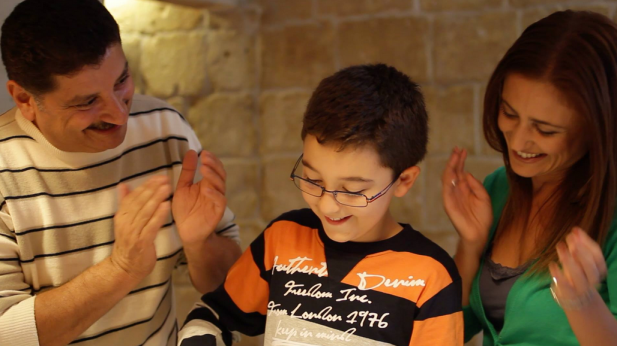
Happy Families
A MISOGYNIST FILM
I’m sure it was unintentional, but it is a blatantly misogynist film dreamt up by a male mind and which will mostly be enjoyed by other male minds. Kind of like those cheesy 80s pop corn flicks like Predator (1987)…or Conan the Barbarian (1982). Yes they both star Schwarzenegger. One gets the feeling Meli sees a bit of Shwarzenegger in himself. He wanted to create an 80s style cop movie full of thrills, tears, laughs (intentional and otherwise) and pretty ladies.
It feels like Meli (actor-writer-director) is very fond of his lady actresses and wants to share as much on-screen time with them as possible. During a particular scene late in the film where Smith is looking for his kidnapped wife by showing a photograph to whoever happened to be passing by at the moment, he only seemed to come across attractive teenage girls, one of which only had the opportunity to express her talent through her cleavage. Oh, the glamorous life of filmmaking.
After he interrogates the third passerby who also happens to be female (in Qlub Imweġġgħa’s world, it seems that females have nothing to do but to hang around the street), someone must have pointed out to Meli that he should also find a man to interrogate. The final person he drives up to in the street is a very startled, very convincing man, who seemed genuinely surprised to see Meli drive up to him and who also seemed very happy to escape the camera as quickly as possible.

Sarah Camilleri, apart from being one of the most talented actors of the bunch, also happens to be quite the classy beauty. Meli unashamedly flaunted her wherever he finds the opportunity. We also get to see her soaping her shoulders in the bath. Then comes one of the most pathetic shots in the history of Maltese cinema – she steps out of the bath – the audience still assuming she’s undressed. The camera slowly climbs (creeps is more the word) upwards along her nude body. Starting from her feet, continuing with her legs, going on to her thighs…and just as you hear yourself going ‘QAĦBEĊ – He’s gonna do it!’ – she covers herself with a towel. A completely useless shot which at least I hope served to amuse Meli himself.
DIALOGUE
The dialogue tries way too hard to sound natural – but ends up unintentionally ludicrous at certain moments. A memorable instance was when Smith is sitting with his wife (one of them – he seems to have knack for losing and gaining wives) and 13-year-old (or thereabouts) son at a restaurant. They are discussing where to go for a holiday. Son says something like: ‘Nixtieq immur l-Amerika – Ħa niltaqa’ mal-karattri kollha ta’ Walt Disney!’ I mean… that line may have worked in 1992, but not in 2014. It showed how out of touch Meli (the screenwriter) was when he wrote the dialogue, and that either nobody tried to help him amend the script, or that he refused such help.
The dialogue was at its most laughable when Tanti’s wife (I forget her name) is dying and her son abruptly decides to leave his girlfriend for no other reason than that he believes this relationship made him abandon his rich (and clearly clinically insane) parents. The young man is trying very hard to cry while Tanti is pulling weird facial expressions in order to manage to show something that resembles sorrow. The mother has just died (but a closeup will reveal that she still breathes!) and the son laments – ‘Jien kont inħobbok!’ He apparently stops to remember his lines. Ah yes. ‘Imma għalfejn kelli ndum daqshekk biex niġi narak?’
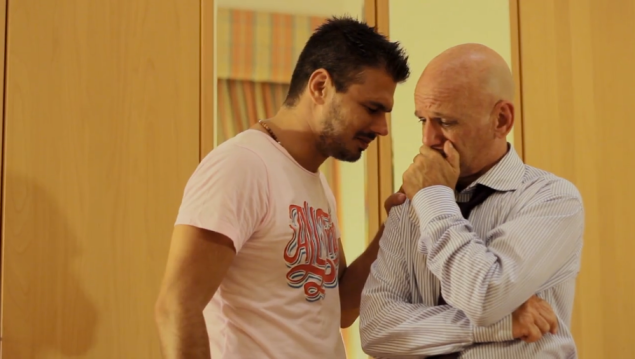
Fejn hi l-Mama? Mal-anġli!
In another scene, the father (Tanti), the doctor, the son and another man who it was never quite clear what he was all about, are having a candlelit dinner. A very upper-class hoity-toity aristocratic type of dinner with the wine glasses, chandeliers and other typical effects. Joe Tanti announces there and then that he will adopt the doctor (who is obviously old and rich enough to live comfortably on his own). But instead of replying with, “Aint nobody got time fo that!’ which would have been a much more realistic reaction, the doctor nods solemnly and agrees to be adopted. Then it’s time for the son to enquire why his father needs the constant company of a doctor. Something along the lines of:
‘X’għandek, missier? X’qed taħbili?’
‘Xejn, ibni.’
Doctor says ‘Kun af, għażiż ġuvnott, li l-papa qed joffrili li noqgħod magħkom b’rispett u b’gratidudni.’
In another scene, John Smith is offering to take his son out for his birthday. ‘Issa mmorru x’imkien nice ta!’ What next? Will he sing him banni-bannozzi and feed him plasmon? Please – is this really the way fathers talk to their teenage sons today?

We have the perfect job, you and I!
THE MUSIC
The music on the whole was adequate…as adequate as could be really. I find it difficult to criticize the score, even if at times it felt that composer Sam Hayman was struggling to cope with the fluctuation of contrasting moods in such a short time. In fact, at one particular point, in order to create suspense (I think), one note was sustained for too long – it felt like forty-five to fifty seconds. This was needed to cover the collective mood conveyed for a few consecutive shots. A simple cut and crossfade would have easily rectified this. The only gripe that one could have with the music is that at times it is a bit too reminiscing of the tune of The Godfather theme.
AUDIO EDITING
One of the film’s most obvious weaknesses is with its audio track. The sound felt like it was hurriedly edited with the vision and that was that. The sound also suffers from occasional clipping & distortion, something that could have easily been avoided with a few sound tests prior to the actual recording. Continuity problems were also prevalent in sound. The most ongoing problem with the sound, actually was the lack of it. Countless times, when there was no specific diegetic sound to be heard, whoever edited the sound opted to leave the sound track without any sound in it. Pure clean silence. Which is something noticeable and distracting.
VISION EDITING
I happily noted that the infamous redhead from the teasers did not make the final cut. This means that Meli listened to what was being said on the internet, and if that scene was in the original cut, decided to amend it.
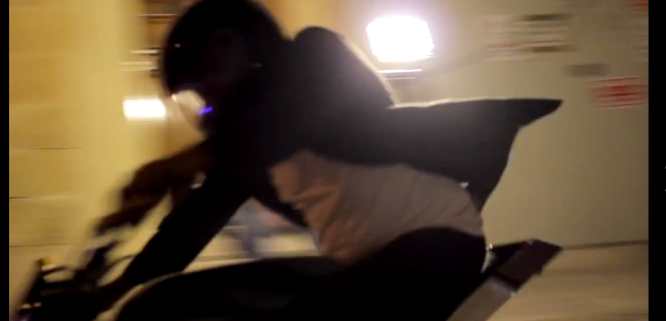
The offending light!
Still, it is clear that whoever edited the film is not a film editor or does not appreciate that a different approach from tv drama editing has to be taken with film. In television it may be acceptable to fade to black every ten minutes to indicate the end of a segment. This is definitely not accepted in cinema, even more so in a thriller, where the action and suspense are supposed to be ongoing. All fading to black does in this kind of film is remind you that you’re watching a dragging film with a plot so uselessly complex and multi-layered it makes Inception look like Scooby Doo.
Generally, the editing feels very disjointed. Most scenes drag on slowly and painfully, while others are composed of mini-montages; full of haphazardly cut shots. A case in point would be the scene where we see Smith making a coffee (if I remember correctly). It is comprised of close-ups. A close-up shows the empty cup CUT TO close-up of hand grabbing cup CUT TO cup being filled with water… I was sure that this was Meli trying to emulate the infamous HOW TO BASIC youtube channel.
for those interested in learning more about the HOW TO BASIC channel….( at your own risk)

And now for something completely different….RESTAURANT SKETCH!
Soon after that came another scene which was surely edited by a different person. Meli (Smith) is on a date with Camilleri. There’s this very long take of this shot of the both of them, just sitting across of each other at the table in the restaurant. Enter the waiter. He meticulously fills each glass with wine. The sound of each of the glasses slowly filling up with wine cracked me up. The cherry on the cake had to be when for no valid reason, the waiter brings the chef to stand in front of the table. Try as I might, I simply could not fathom why the chef had to be brought to the table, other than because they were going to act out Monthy Python’s Restaurant Sketch. We’ll never know.
CAMERA TECHNIQUES
Most of the camera handling was what one would expect from a local tv series. Most of it was shot on a still tripod, and conversations filmed as if the actors were addressing an off-camera interviewer. The one memorable scene where the cameraperson suddenly went out of character was when Smith (who becomes an alcoholic after losing his wife), drunkenly plods around his house. The camera plodding around in the same drunken fashion was trying to mimic Meli’s acting rather than utilized to enhance it. It also made it very difficult for me to contain my Coke & Pringles.
CHARACTERS BLENDING IN WITH THE BACKGROUNDS
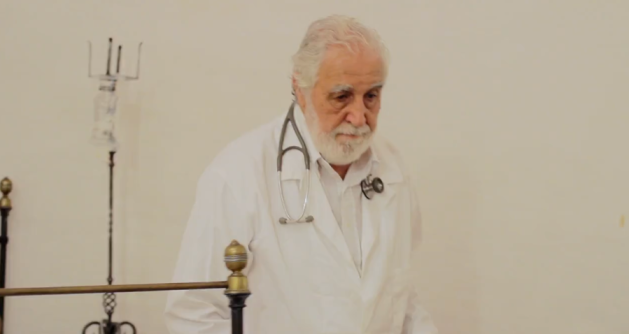
The Doc
Ok, we get that Joe Tanti’s character is an aristocrat who lives in this big mansion with a surrounding garden, an empire seemly disconnected from the rest of society by one gate and two silly henchmen. The location chosen for the exterior shots of this place was effective enough. The interior shots, on the other hand, had the opposite effect. The actors were poised against whitish/ yellowish walls and most of the time they were wearing whitish/yellowish clothes themselves. Combine this with inadequate lighting and a low quality film export (an avi or h264 I would imagine, then burnt onto a playable DVD before being mercilessly stretched to fill the cinema screen), created quite an unsettling effect. At times, I found my eyes straining to focus on the actors as they blended in so well with the background wall.
RECAP: MAIN CHARACTERS
Before I end this review, I’ll just mention a few points about each character and what they offer to the film.
Joe Tanti’s Character: The walking manifestation of bipolarity and contradiction.
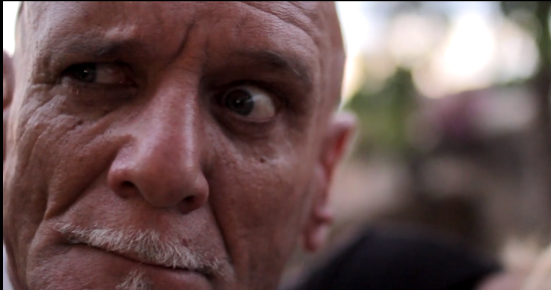
The man’s entertaining. Just watch him go all spastic and discover his Italian heritage during the final climatic showdown – calling Smith “SPETTORE SMITTY!”, apparently having an echo function installed in his voice box, and threatening Meli with ‘Aqta dan il-bulxit! Għandi bomba – u martek ħa tagħmel BUMM!’ – Lit. translation – Quit this bullshit. I have a bomb and your wife will explode.
His character’s so rich he showers his two bodyguards with cash, thousands of euros of cash just for sticking around his front door. He gives them, quote Tanti ‘ELUF, ELUF!’ On a more serious note, Tanti was definitely the actor who had most fun with his character. Look out for his expression during his son’s funeral (who he buries in his own back garden) – hatred, craziness and eye-popping constipation all in the same frame. Genius!
Borg

The sidekick who is seen typing away onto a computer which is always conveniently offscreen. He’s content simply to be in Meli’s shadow. Or to retrieve him from bars when he’s drunk.
Smith
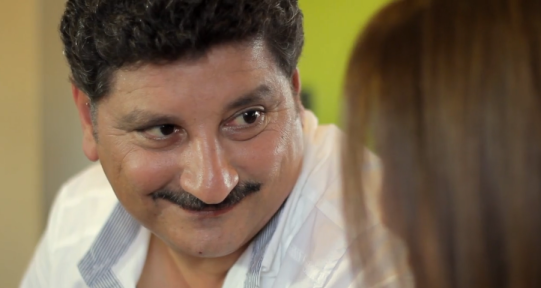
A really, I mean really unlucky policeman who doesn’t even know that he is a policeman. He explains this to Tanti’s girlfriend (yes I know this is getting a bit confusing,) when he tells her ‘Le, m’inhiex pulizija. Aqwa minn hekk.’ Umm – I hope Meli knows that an Inspector is a policeman – granted, ranks higher than constable, but a policeman nevertheless. He’s practically a walking disaster and sets a very bad example to every other member of the force he comes into contact with. He drink drives. He never does any police work (after the film’s opening scene), but still likes to remind us he’s the law. He locks the main antagonist (who clearly has psychological problems and is in dire need of professional medical attention) in a rigged hut and mercilessly blows him to high heavens.
Paul
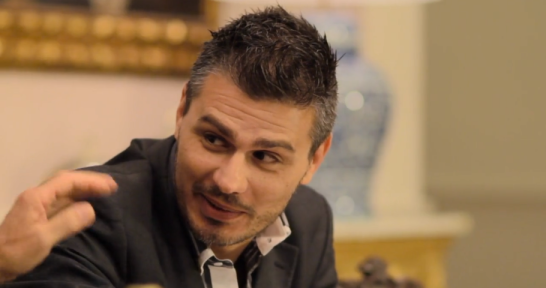
Joe Tanti’s son in this film is initially quite the bastard as he dumps Camilleri for someone else. He was fixed though – as this someone else (who is never seen) suddenly dies, he enters into a coma himself, stays in it for over a year, and wakes up only to be told that he’s in limbo. Mary says,“Qiegħdin fis-siegħa tal-prova. Għadna ma tlajniex il-Ġenna.” This charade goes on for quite a long while and suddenly you don’t know if your watching Qlub Imweġġgħa or Constantine (2005).
In this delicate state of mind, he is convinced by a conniving maid (who really has nothing to do with Mary’s personal plight) to stand up from his bed. He does this pretty effortlessly, considering he’s been in a coma for more than twelve months. She makes him walk to the bedroom window in his pyjamas, climb out and fall to his bloody death.
So yeah, Paul gets his. Such is life.
The Doctor Nicholas

An evil dude who kidnaps Smith’s wife – but looks so Christmas Fatherly (what with his white beard and all), that she can’t help but try to confide in him anyway. ‘Dott, nispera li nista nafda kelma fik.’ No, don’t trust him, he kidnapped you, stupid girl.
The Two Maids
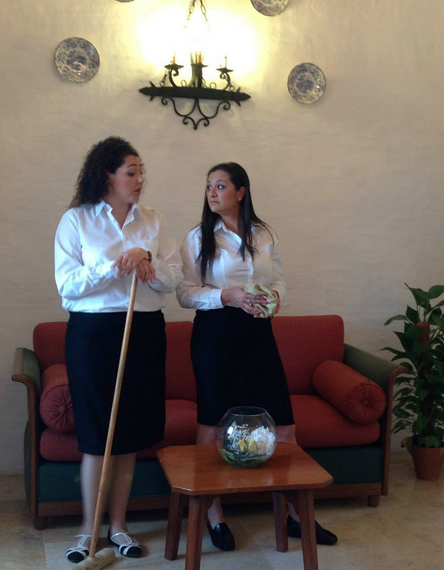
They are constantly seen wiping the same piece of furniture and gossiping about everyone else who is living in Tanti’s mansion.
Coma
As much a character as any other. Am I the only one who thinks that at one point or another, everyone in this film falls into a coma? There is the mother in the beginning (Tanti’s wife) or was she dead? Paul definitely fell into a coma. As did Mary, Smith’s wife. And while they’re waiting for her to wake up or die (she in fact, does both of these), Smith and son also look like they have fallen into comas.
Final Verdict – 3/10: It is very difficult to point out what could have been done to improve Qlub Imweġġgħa, but if I were to take a guess, it would be to try to re-make the film and try to keep to half its running time, lose most of the subplots and also do away with the unnecessary extended ending. In my opinion, it could make a more than decent product for television.
I decided to end this post with a few suggestions that I would offer to whoever has a similar dream to Mr.Meli’s (which in itself is commendable) and how one could go about making such a dream a reality.
What Qlub Imweġġgħa Teaches Us
- There is no such thing as my own film. The more the film is ‘yours’ the more you will be to blame for its shortcomings. Spread the roles around. Find your competence and work on that as much as possible. You may be a likeable actor, that doesn’t necessarily make you a good writer or director. I believe a film can only be good if it is the result of a collaboration between different talents. Which takes us to lesson number 2.
- Collaboration – listen to what others have to say. Listen to feedback and work on it while the film’s still in production and pre-production stage. Yes this takes humility and could also mean a shared credit, but what’s wrong with that? What’s actually so cool about having Written, Directed by, Produced and Starring YOU plastered all over the DVD cover? Why should that be important? Wouldn’t you rather share the credits and the pride? Bounce every important idea off competent individuals you think you can trust before shooting.
- A (mainstream) film is about the characters and plot. Not about action, explosion or special effects.
- Know your medium and write accordingly – Chose the best idea out of all of them and tell it according to your chosen medium. Eliminate any scenes that add nothing to the story. Try to do this in the storyboard stage – it will save you, your actors and crew a great amount of time, money and unnecessary humiliation.
- Decide on the film’s character – Is it an action film? Or is it a comedy? Is it’s goal to teach lessons, to shock, or simply to entertain? If your film is the last one, avoid needless realism such as extra realistic toothpaste spitting sounds. They snuff the magic.
- Take care of the trailer – Love the trailer as much as you would the film. Make sure your trailer promotes the film, rather than destroys it before it has the chance to be seen.
If other young filmmakers understand and apply these few guidelines to the projects they hold dear, then Qlub Imweġġgħa would not have suffered in vain.
Please do not hesitate to express your own opinions about Qlub Imweġġgħa or about this review in the comments section below, whatever those may be.
 It took me a while to get around to watch Springbreakers as I was under the impression it was created for what can be best described as the Beiber generation. Bikini-clad Disney starlets Gomez and Hudgens flaunting themselves on the promotional pictures could have been what misled me. But, being, after all, a Harmony Korine film, I had to get around to it sometime. And I’m so glad I have. Springbreakers follows Faith (Selena Gomez), Candy (Vanessa Hudgens), Brit (Ashley Benson) and Cotty’s (Rachel Korine) attempt to freely “enjoy to the fullest” their youth through the teen-party scene, while escaping from the boredom of school life. The story is pretty straightforward, and the characters, especially those played by Benson and Hudgens are rather bland and one-dimensional.
It took me a while to get around to watch Springbreakers as I was under the impression it was created for what can be best described as the Beiber generation. Bikini-clad Disney starlets Gomez and Hudgens flaunting themselves on the promotional pictures could have been what misled me. But, being, after all, a Harmony Korine film, I had to get around to it sometime. And I’m so glad I have. Springbreakers follows Faith (Selena Gomez), Candy (Vanessa Hudgens), Brit (Ashley Benson) and Cotty’s (Rachel Korine) attempt to freely “enjoy to the fullest” their youth through the teen-party scene, while escaping from the boredom of school life. The story is pretty straightforward, and the characters, especially those played by Benson and Hudgens are rather bland and one-dimensional.








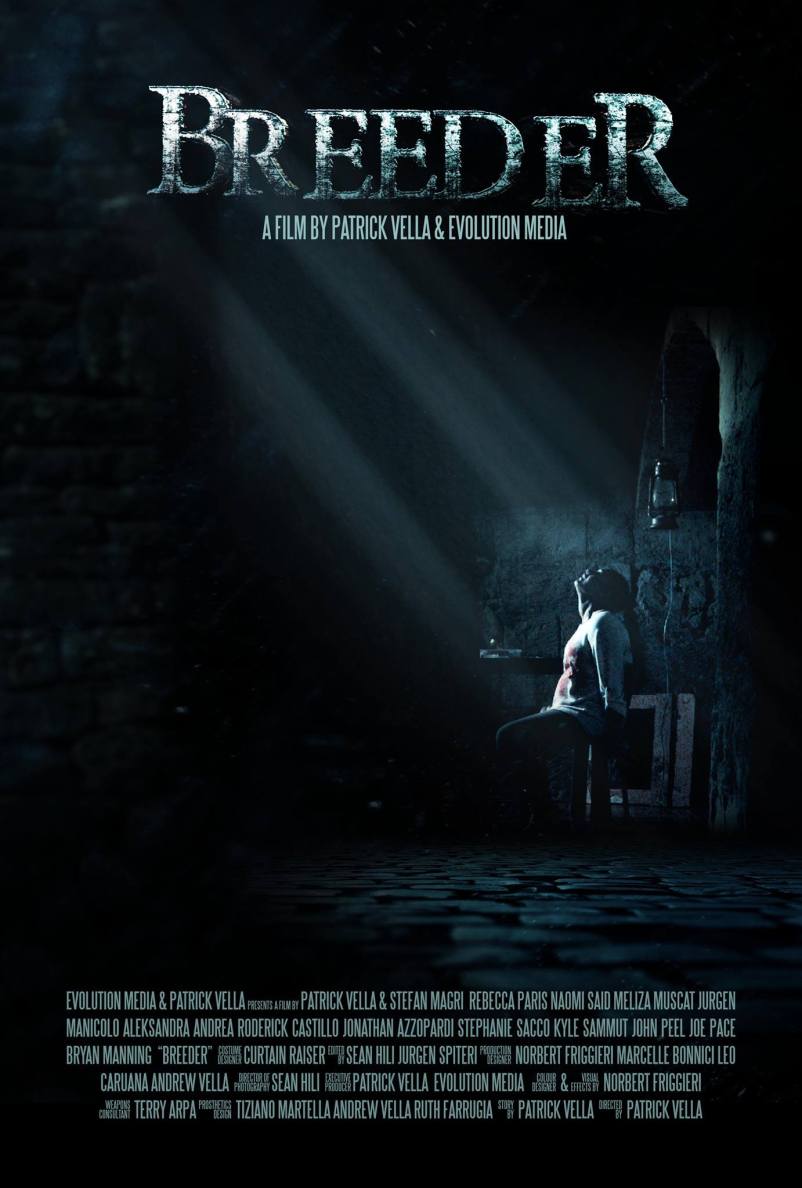

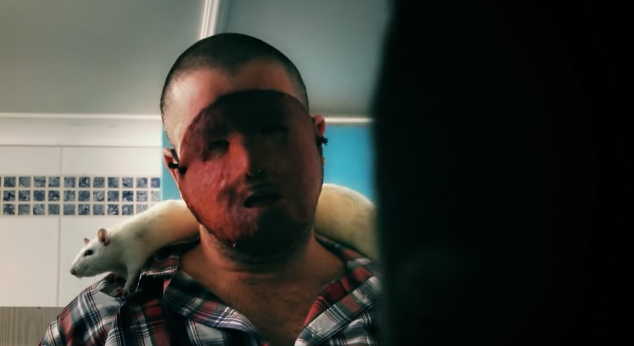
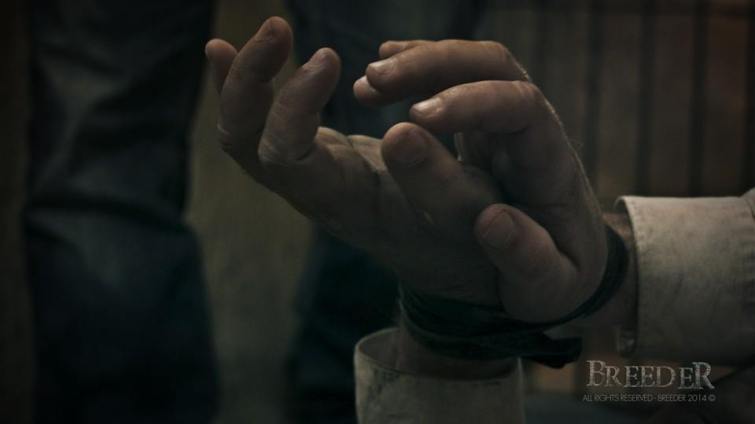
 Devil’s Experiment: First in the Guinea Pig Japanese Slash-Gore-Horror Series What do these films have that makes them so fascinating to watch, even after all these years? 70s and 80s gore-horror filmmakers’ motives were clear – they created mindless schlock – masterfully presented, sure to entertain. Rather than tackle contemporary world problems or comment on issues requiring intellectual investment, they reveled in broken bodies, severed limbs, despicable villains and heroes (many times in the forms of the attractive damsels in distress). And perhaps that’s why they stood the test of time.
Devil’s Experiment: First in the Guinea Pig Japanese Slash-Gore-Horror Series What do these films have that makes them so fascinating to watch, even after all these years? 70s and 80s gore-horror filmmakers’ motives were clear – they created mindless schlock – masterfully presented, sure to entertain. Rather than tackle contemporary world problems or comment on issues requiring intellectual investment, they reveled in broken bodies, severed limbs, despicable villains and heroes (many times in the forms of the attractive damsels in distress). And perhaps that’s why they stood the test of time.
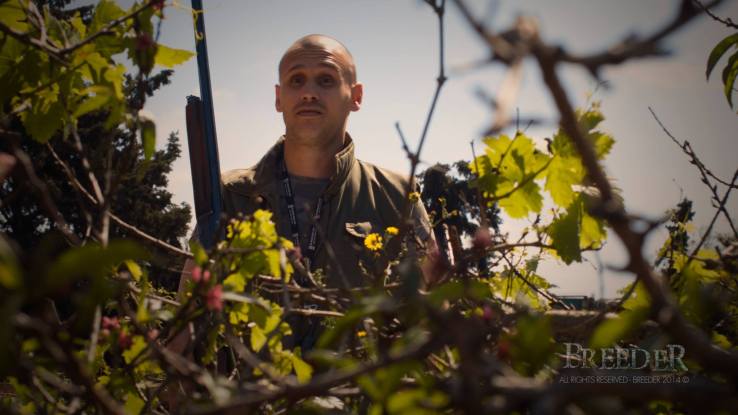
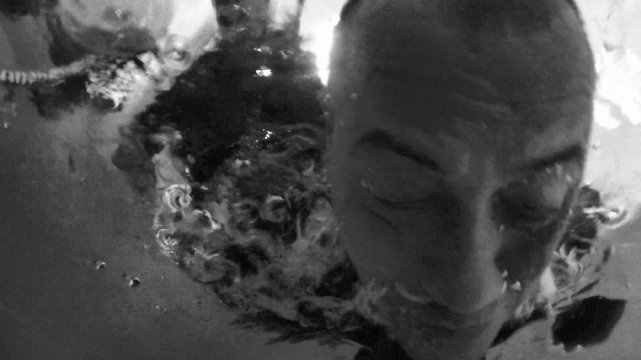
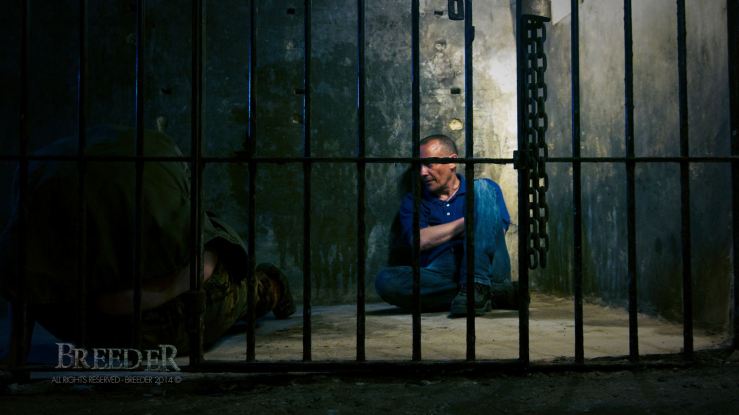
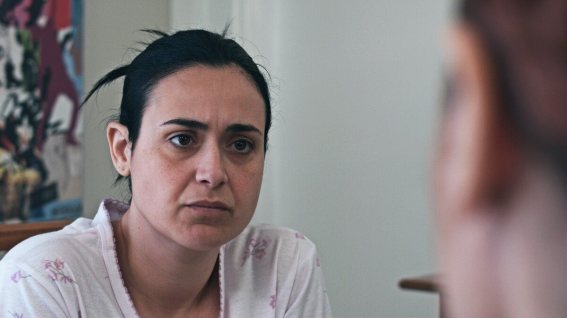
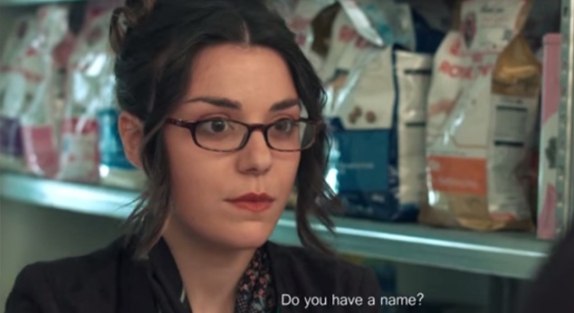
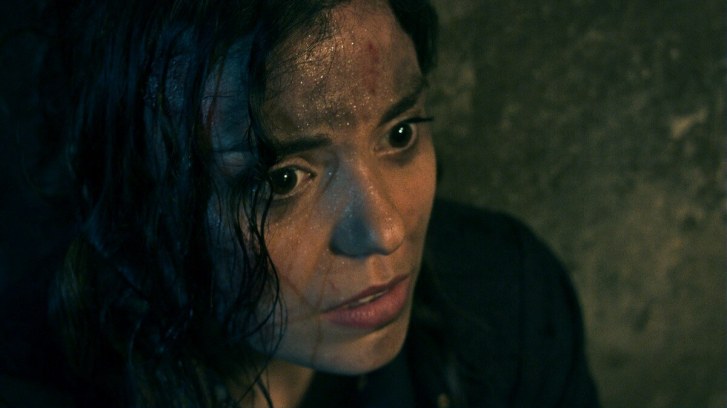

 Drug Depiction: Hunter S. Thompson’s psychedelic classic is brought to the big screen. The story follows Raoul Duke travelling across (the very wild) Western America with his lawyer who is simply referred to as Dr.Gonzo. How do they do they survive? Thanks to the substantial quantity of drugs and alcohol they have stashed in their convertible.
Drug Depiction: Hunter S. Thompson’s psychedelic classic is brought to the big screen. The story follows Raoul Duke travelling across (the very wild) Western America with his lawyer who is simply referred to as Dr.Gonzo. How do they do they survive? Thanks to the substantial quantity of drugs and alcohol they have stashed in their convertible. Drug Depiction: Drug addiction and it’s aftermath is presented as despairingly dark and ugly.While the film is highly stylized and is considered a cult classic, it remains one of the most disturbing and uncomfortable films you’re ever bound to see, period. The audience mostly takes a third seat and watches the protagonists’ lonely descent into painful humiliation.
Drug Depiction: Drug addiction and it’s aftermath is presented as despairingly dark and ugly.While the film is highly stylized and is considered a cult classic, it remains one of the most disturbing and uncomfortable films you’re ever bound to see, period. The audience mostly takes a third seat and watches the protagonists’ lonely descent into painful humiliation.












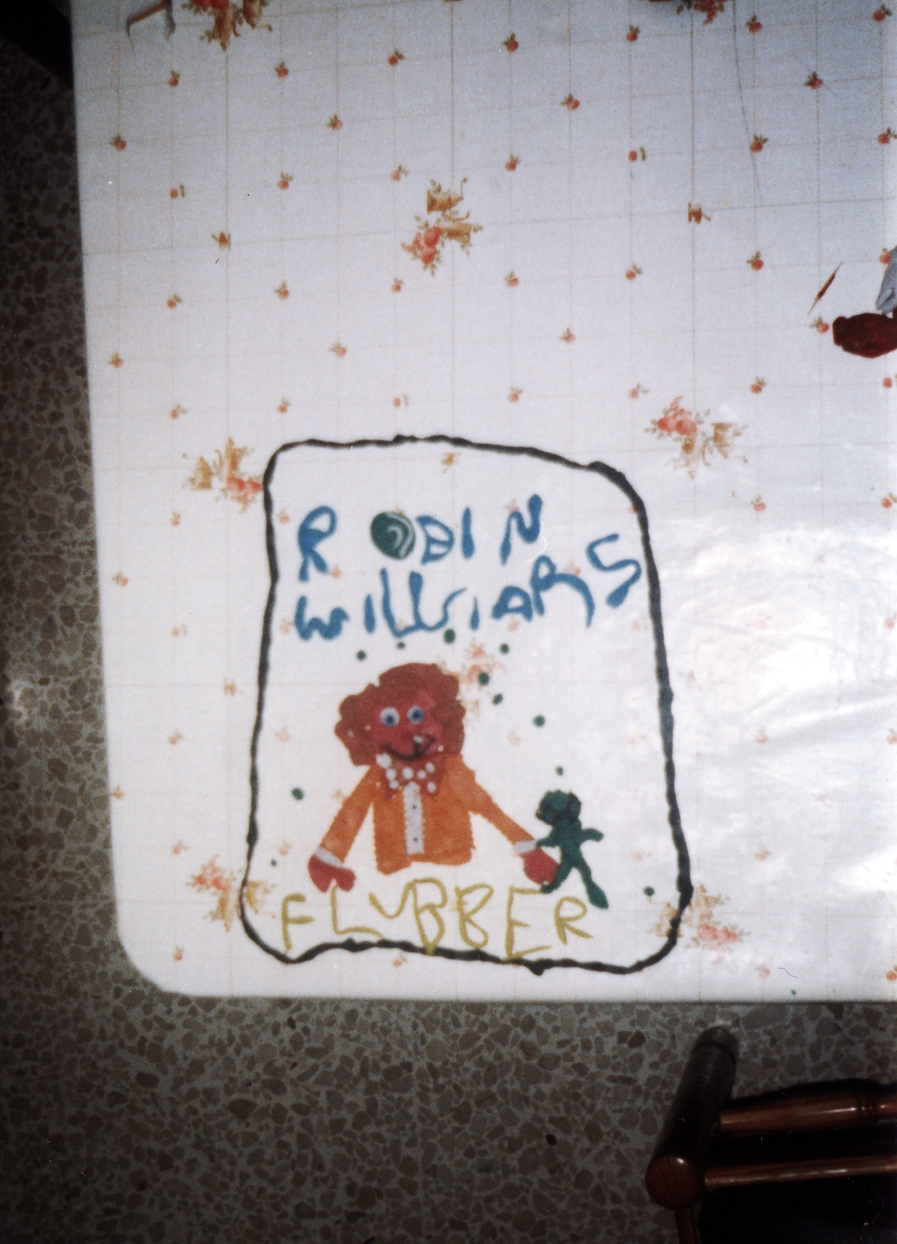





























 I remember this day like it was yesterday. The first half of the movie went by without a glitch. The second half opened without any sound going on. The audience started playing the waiting game. Who’s gonna get up, walk out, and notify management that in Cinema 2 they were screening silents? This went on for a good fifteen minutes. No one gave us our money back.
I remember this day like it was yesterday. The first half of the movie went by without a glitch. The second half opened without any sound going on. The audience started playing the waiting game. Who’s gonna get up, walk out, and notify management that in Cinema 2 they were screening silents? This went on for a good fifteen minutes. No one gave us our money back.
 Shoot, I had almost forgotten to mention this one altogether. It would have been a shame – it’s a gem. It was a wet, wet September day. So, I’m sitting at the last row (M or N I guess) of the theatre. We’re watching this refreshing surprise of a pirate swashbuckler which I enjoyed so much I went to watch twice in the same weekend. Pirates of the Caribbean was the film which brought the eccentric (trying hard to find an adequate adjective here!) Johnny Depp to a new generation…and re-kindled his fan base with the older Edward Scissorhands buffs. It was also the film which apparently introduced 5D at the Fgura Cinemas! As I was saying, we’re sitting at the back row, my brother sitting on my right. It was the scene were Barbosa says, ‘You best start believing in ghost stories Ms.Turner, you’re in one!’ or something to that effect. What happened next was that with each splash of the Pearl, I felt the a spray of cold seawater(?) on my forehead. This left me startled as much as pleasantly surprised. No one had said anything about 5D elements, and here I was, getting… (ANOTHER SPRAY IN THE FACE) …thoroughly wet by what I thought was a great attempt at special eff— On my right, my brother was dumbfounded, staring upwards at the ceiling, from where rainwater (from real clouds high above the Fgura Cinema) was freely seeping from a spot directly above his head. He ended up drenched. No one said they were sorry, gave us our money back, or offered to pay the doctor’s bill!
Shoot, I had almost forgotten to mention this one altogether. It would have been a shame – it’s a gem. It was a wet, wet September day. So, I’m sitting at the last row (M or N I guess) of the theatre. We’re watching this refreshing surprise of a pirate swashbuckler which I enjoyed so much I went to watch twice in the same weekend. Pirates of the Caribbean was the film which brought the eccentric (trying hard to find an adequate adjective here!) Johnny Depp to a new generation…and re-kindled his fan base with the older Edward Scissorhands buffs. It was also the film which apparently introduced 5D at the Fgura Cinemas! As I was saying, we’re sitting at the back row, my brother sitting on my right. It was the scene were Barbosa says, ‘You best start believing in ghost stories Ms.Turner, you’re in one!’ or something to that effect. What happened next was that with each splash of the Pearl, I felt the a spray of cold seawater(?) on my forehead. This left me startled as much as pleasantly surprised. No one had said anything about 5D elements, and here I was, getting… (ANOTHER SPRAY IN THE FACE) …thoroughly wet by what I thought was a great attempt at special eff— On my right, my brother was dumbfounded, staring upwards at the ceiling, from where rainwater (from real clouds high above the Fgura Cinema) was freely seeping from a spot directly above his head. He ended up drenched. No one said they were sorry, gave us our money back, or offered to pay the doctor’s bill!